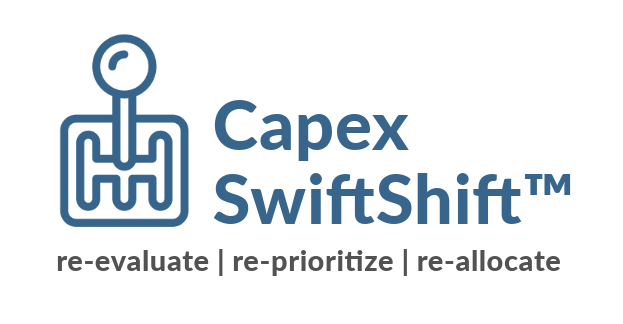In an Era of Uncertainty, Enterprise Capex Strategies Are Under Scrutiny
CAPEX PLANS | CAPITAL BUDGETING MODEL | STATIC ALLOCATIONS
Take John Deere. The global agricultural equipment manufacturer recently announced the company was prepared to invest $20 billion in the U.S. over the next decade, but due to the $500 million in tariff-related costs and weak demand driven by low crop prices, the company knows it needs to set a new course (The Wall Street Journal).
So while their teams are eager to scale up manufacturing innovation, these headwinds are forcing a re-evaluation of how they are allocating capital. This includes a realignment of factory upgrades, deferrals of R&D-related facility expansions, and a re-scoring of growth initiatives based on ROI sensitivity and cost volatility.
Moreover, Deere is scrutinizing supply contracts, looking to optimize global trade flows under the United States-Mexico-Canada Agreement (USMCA), and exploring price increases for 2026 equipment to offset costs.
By pivoting quickly and decisively, the company is looking to maintain its competitive edge. Nothing runs like a Deere.
Deere’s Not Alone: A Broader Capex Reckoning Is Underway
Food and beverage manufacturers are similarly under pressure. Inflation-weary consumers, rising input costs, shifting consumer preferences, and an unpredictable business environment are forcing them to rethink and reprioritize their Capex plans.
At General Mills – a multinational food brand – for example, inflation-weary consumers are impacting sales to the tune of a 1% decline in pound volume in Q4 FY25 (Trammell, @TheAmericanCEO, 2025). Additionally, global food commodity prices remain about a third higher than pre-COVID levels, squeezing margins.
General Mills’ response has been decisive: a $130 million cost-reduction plan is part of a “transformation initiative” to streamline operations and enhance business processes by fiscal 2028 (Investing, 2025). But as they trim the “fat,” they building “muscle” by including targeted organizational actions to fund product innovation and position the company for long-term success (Investing, 2025 & Reuters, 2025).
Other companies in the sector are following suit. The industry is expected to spend $19.3 billion in Capex, despite a 1.1% forecasted cut in Capex spending, with a focus on efficiency-driven projects like automation to maximize ROI on lean budgets. (Food Processing, 2025)
Why Capital Planning Can’t Stay Static
The traditional capital budgeting model, an annual ritual of spreadsheet-driven forecasts, approvals, and static allocations, is incompatible with today’s pace of change. Faced with geopolitical uncertainty, material price shifts, and unforeseen demand fluctuations, a more “activist” approach is warranted.
Agile allocation and pivoting a capital portfolio quickly is not so easy, of course, particularly mid-cycle. This compounded by:
- A lack of centralized visibility into live project performance.
- An inability to model costs, timeline, or ROI variances dynamically.
- Struggle in comparing cross-business-unit initiatives objectively.
- Bureaucratic approval structures.
To overcome this, you need accurate, real-time data into market trends; insights into project rationale, strategy and status across all investments; and, reliable cash flow forecasting tools. Finario’s purpose-built Capex software provides all these.
But, let’s say, you’re still working in a manual environment or within a generic system, and your company is faced with quick, difficult decisions – as was the case earlier this year. Fortunately, you do have options …
Enter: Capex SwiftShift
- Instantly assess forecast-to-actual performance across their project portfolio.
- Model various economic or operational scenarios (tariffs, delays, cost spikes).
- Re-rank initiatives based on real-time ROI, strategic value, and timing.
- Collaborate across finance and operations to adapt plans seamlessly.
In about 30 days, it allows you to:
- Reevaluate ROI assumptions in real time, refreshing NPV, IRR, and payback metrics as actuals come in.
- Reassess your entire portfolio, flag risks, and reschedule projects with live visibility and standardized scoring.
- Reallocate capital thoughtfully, pausing, delaying, or shifting funds where they’ll drive the most value, while keeping full audit trails intact.
The Bottom Line: Pivoting Is the New Planning
In an environment where “wait and see” is not a strategy, capital stakeholders need the ability to act fast and act smart. If current macroeconomics have you deferring a factory build, accelerating an automation initiative, or reevaluating an M&A-driven asset upgrade, it helps to have tools that empower, not encumber.
Click here for more information on how Capex SwiftShift can help your organization shift gears and overcome uncertainty’s gridlock.

